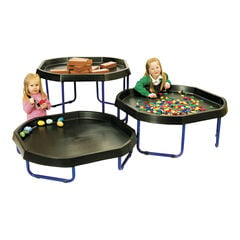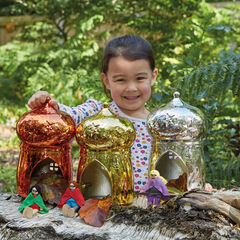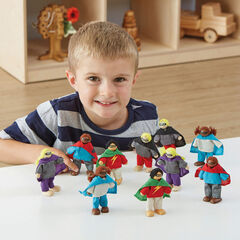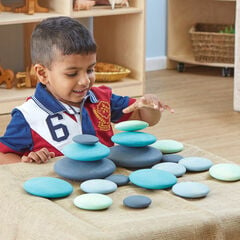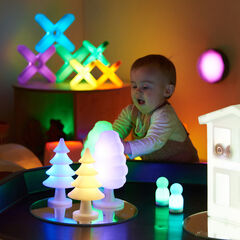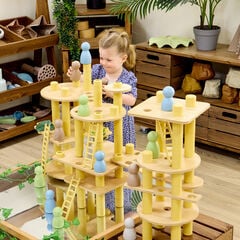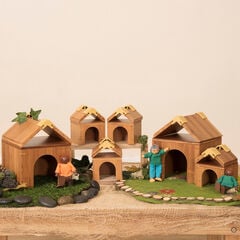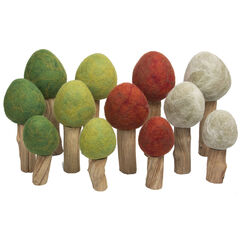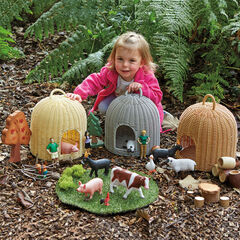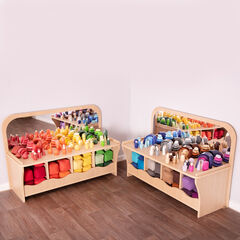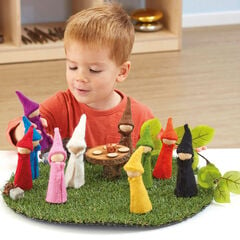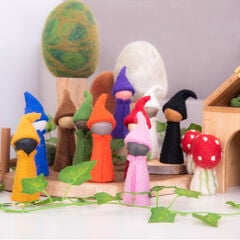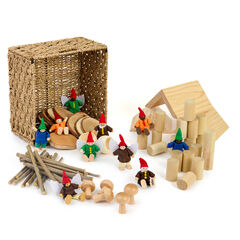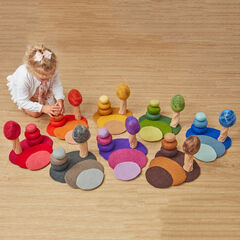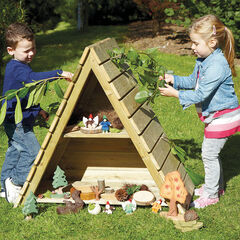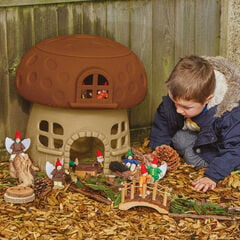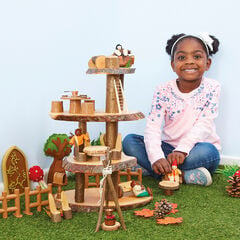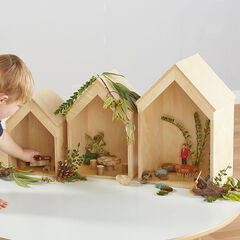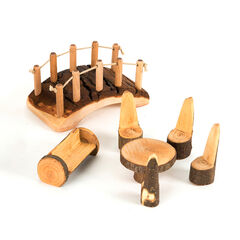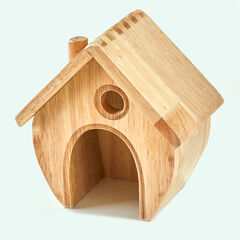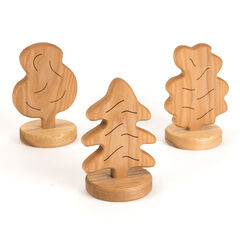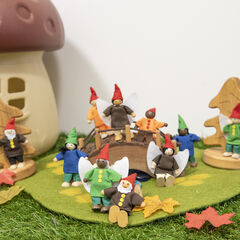Small world, including enchanted worlds, invites children into a world of storytelling, problem-solving and rich imaginative thinking. Whether it’s a fairy peeking from behind a toadstool or a miniature elf setting off on an adventure across a pinecone forest, small world woodland scenes give children the chance to create their own magical narratives—full of mystery, wonder and possibility.
Want to explore more about why small world play is so important? Read our blog on ‘The Importance of Small World Play’ for insights into the developmental benefits and things to consider when setting up a small world play area in your setting.
Building an Enchanted World of Wonder
Miniature woodland figures—like fairies, elves, and forest creatures—are more than just cute companions. They spark curiosity and lead children into imaginative landscapes where anything can happen. These small figures can quickly become familiar friends, and when paired with natural materials like leaves, moss, acorns, and twigs, they help transform a tuff tray, suitcase, or carpet into an enchanted world.
Set the scene with little wooden tables and chairs, a pretend campfire made from sticks and stones, or even magical doorways tucked beside tree trunks or wooden blocks. Add some soft lighting or a lightbox and watch the entire landscape come to life.
Try This:
- Create a woodland world in a suitcase for children to set up and pack away.
- Add a bridge made from lolly sticks over blue tissue paper to mimic water.
- Use recordable resources for children to capture their own character voices or sound effects.
Add a Touch of Fantasy to Small World Play
Introducing fantasy figures such as unicorns, dragons, or talking animals adds another layer of creativity to small world play. These figures open the door to new storylines—where fairies might have to rescue a lost unicorn, or where trolls guard a treasure under the bridge.
You might also include mystical dwellings like fairy cottages, crystal caves, or enchanted castles. Mix in fabric scraps for capes, shiny stones for treasure, and glittery pots of ‘fairy dust’ to support the children’s magical thinking.
Top tip: Provide a basket filled with a variety of characters—fairies, goblins, witches, knights, unicorns, talking trees—so children can choose figures that match the story they want to tell.
Resources for Small World Play
Small world play thrives when children have the freedom to adapt and build their own scenes. Alongside fantasy characters, try offering:
- Miniature accessories such as furniture – chairs, beds, and tiny kitchen pieces to create creature-sized homes.
- Different types of dwellings and buildings – fairy houses, caves, treehouses, castles, or even shoebox houses.
- Loose parts – buttons, corks, pebbles, feathers, and fabric to encourage open-ended construction.
- Natural materials – include natural materials such logs, bark, conkers, shells, moss, or soil for textural variety and real-world connection.
Consider Placing Small World Next to Block Play?
Positioning your small world area beside block play is a simple but effective way to extend learning. As children build houses, towers or bridges with blocks, they naturally weave in narrative and role play with their small world characters.
The block area also offers more opportunities for children to experiment with scale, balance and structure. Suddenly, a castle has turrets, a woodland has different levels, and the dragon really can fly above the tallest tower.
This combination supports collaborative play, problem-solving, and storytelling—all critical early learning skills.
Play Ideas: Treasure Hunts and Fairy Clues
While small world play is often child-led, you can gently steer it with purposeful provocations. Why not create a magical treasure hunt? Leave fairy-written clues under rocks or behind logs. Perhaps the fairy queen has hidden her crown and needs help finding it. Or maybe a mischievous elf has left a riddle to solve.
A simple note from a fairy or forest creature can transform the space. One setting received a letter from a fairy who had hidden nearby—and the excitement that followed led to hours of searching, storytelling, and shared laughter.

Childhood ought to be about lively imagination, awe and wonder, creativity and magical memories. Perhaps these elves and fairies could play their part in that.
In Action: Real-World Inspiration from Practitioners
We know the best ideas come from practice. That’s why we’ve gathered real stories and practical examples from early years settings using woodland and fantasy-themed small world resources. Explore the different ways practitioners have used these resources to enhance language, storytelling and emotional expression:
Click here to view our “In Action” stories
Childhood should be filled with awe, wonder, and magic. When we create spaces where fairies hide behind leaves and dragons guard sparkly treasures, we aren’t just encouraging play—we’re opening a door to possibility, imagination, and lifelong creativity.
Written by Michelle Reid. Michelle is a mum of one and has over 20 years of experience working as a nursery nurse and qualified primary school teacher.




















